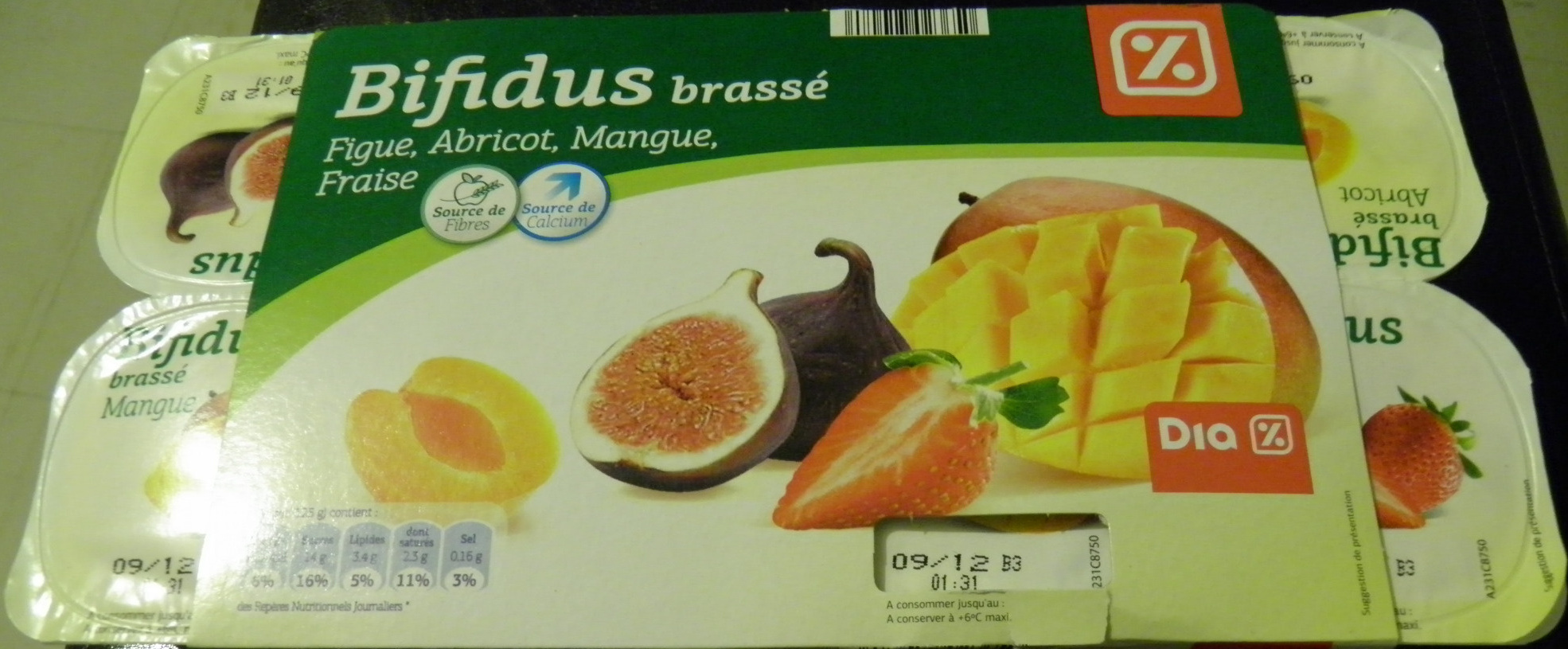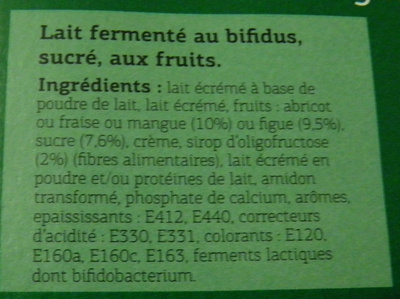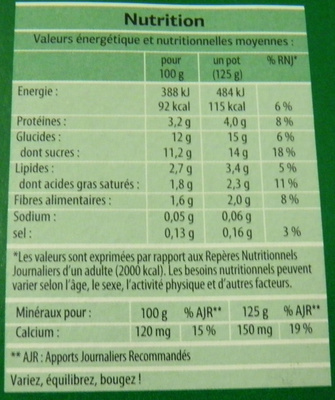Bifidus brassé (Figue, Abricot, Mangue, Fraise) 8 Pots - Dia - 1 kg [2 x (4 x 125 g)]
This product page is not complete. You can help to complete it by editing it and adding more data from the photos we have, or by taking more photos using the app for Android or iPhone/iPad. Thank you!
×
Barcode: 8480017023650 (EAN / EAN-13)
Common name: Lait fermenté au bifidus, sucré, aux fruits
Quantity: 1 kg [2 x (4 x 125 g)]
Packaging: Plastic, Pot, Cardboard, Fresh, Seal, Sleeve
Brands: Dia
Categories: Dairies, Fermented foods, Fermented milk products, Desserts, Dairy desserts, Fermented dairy desserts, Bifidus yogurts
Labels, certifications, awards: Source of fibre, Calcium source, High fibres, Made in France
Manufacturing or processing places: Yoplait France (Filiale Général Mills / Sodiaal) - 23 Rue des Grandes Courbes - 72100 Le Mans, Sarthe, Pays de la Loire, Yoplait France (Filiale Général Mills / Sodiaal) - Chemin des Mines - 38200 Vienne, Isère, Rhône-Alpes, France
Traceability code: FR 72.181.001 CE - Mans (Sarthe, France), FR 38.544.004 CE - Vienne (Isère, France)
Stores: Dia
Countries where sold: France
Matching with your preferences
Environment
Packaging
Transportation
Report a problem
Data sources
Product added on by hommedanslalune
Last edit of product page on by tacite-mass-editor.
Product page also edited by elttor, jacob80, manu1400, packbot, tacite.










